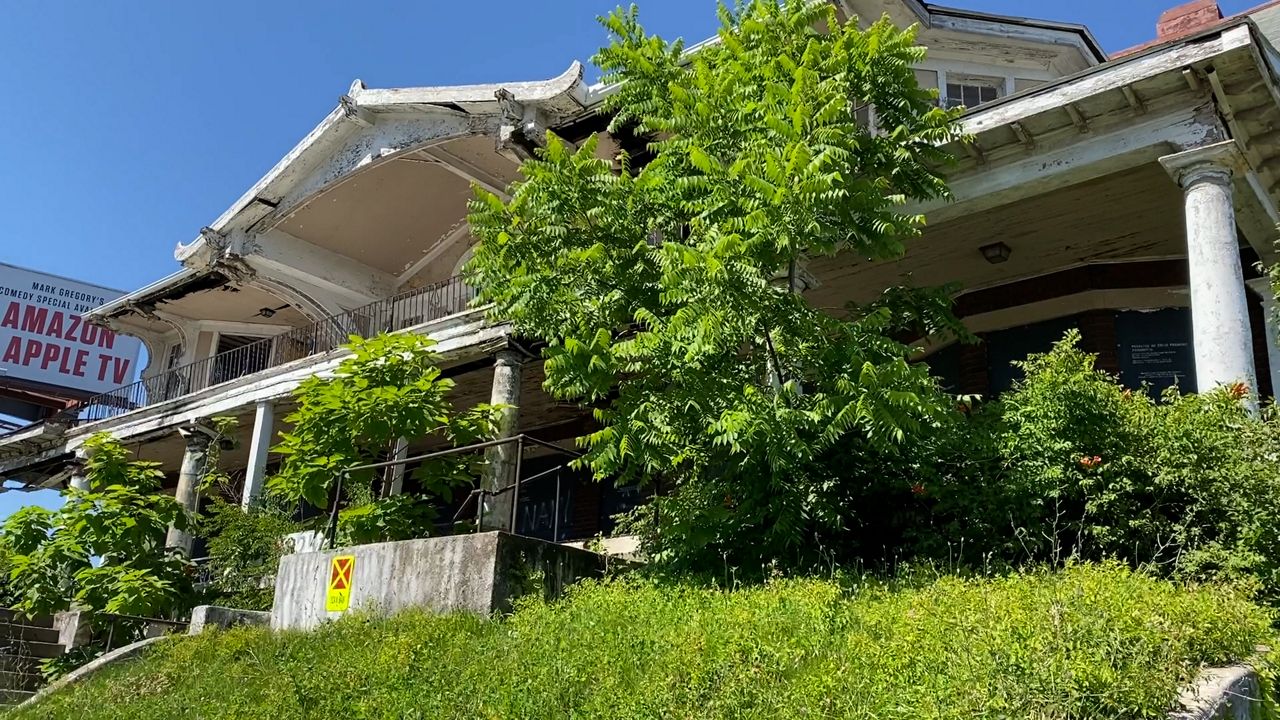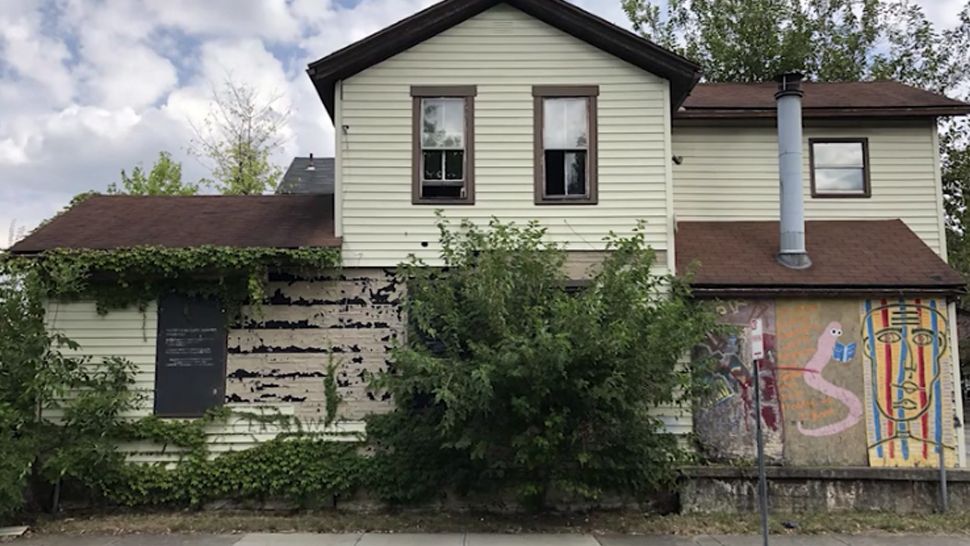DAYTON, Ohio — To address the issue and stabilize neighborhoods for residents, the city is kicking off the Dayton Recovery Plan, demolishing the first property in Old North Dayton.
A stripped-down interior, unsafe structure, spent bullet casings and animal skulls are just a few issues found inside.
Nuisance Abatement Specialist Ken Jackson inspects these types of properties all through the city.
“This house here had a history of drug activity,” Jackson said. “As well as then we found the possibility of illegal dog fighting activity.”
Neighbors said this house has been a problem house for years. Mark Winkle lives across the street. For the past two years, he did everything in his power to notify the city.
“I contacted code enforcement, city law director over two years ago,” he said. “And I’ve fought with them over the last two years. Had to take them to court.”
It’s a proud day for Winkle because 1516 Chapel St. is being demolished.
But this house is just one of many, causing a major issue for Dayton residents. In a recent city survey, 83% of residents identified the need to demolish nuisance properties as a moderate or high priority.
The city estimates 1,443 properties are on the nuisance list—at least 50 of those are fire damaged. A full city survey hasn’t been conducted since 2015, so those numbers could actually be greater.
“What we’ve been tasked to do by the city manager is to go out, sweep the remaining neighborhoods to get the full picture,” Steven Gondol, deputy director of Department Planning, Neighborhoods and Development said.
Gondol said there’s a mountain to move when it comes to this issue, but the city is making a big step forward starting with this first house.
“The problem always outpaced the funding,” Gondol said. “So we never had the funding to fully address it.”
Dayton is dedicating $15.8 million of $55 million in the Dayton Recovery Plan to target stabilization and demolition over the next three years. Typically the city spends $1 million on demolition each year. Rough estimates from city officials suggest a standard demolition costs $14,000; a fire-damaged demolition costs around $23,000.

Gondol said the big caveat for the city is finding a partner to take the lot and redevelop it into a new home.
“With the ARPA and Dayton Recovery Plan funds, it gives us and the staff a really monumental task of being impactful with those funds, truly leveraging it to give the neighborhoods and communities the stabilization that they’ve desired for so long,” Gondol said. “To give redevelopment efforts that chance to get going, and to really transform the city of Dayton.”
The lot at 1516 Chapel St. is being looked at as a potential build for a Pathways to Homeownership home, a development of CountyCorp.
Mike Grauwelman is the executive director of the Montgomery County Land Bank. He said even more properties are going to be taken down, thanks to additional funding from the Ohio Department of Development.
“The state providing $150 million for demolition funds is great news,” Grauwelman said. “It’s gonna be a definite boost to the community to eliminate some of these blighted properties.”
He said those funds will be shared among all 88 counties across the state, but the Land Bank has applied for more than the standard allotment of $500,000 to better address the issue that’s plaguing the region.
“It’s been a long time coming,” Grauwelman said. “It’s time for us to go back and clean up those areas so we can reuse those.”
The Land Bank has submitted 290 commercial and residential properties for demolition in 11 Montgomery County communities.
Gondol said the Dayton Recovery Plan will take place over the next four years, with the goal of stabilizing neighborhoods—that’s their promise to residents.
“We have a plan,” Gondol said. “We’re working to achieve that throughout the city. Some of the worst properties in our neighborhoods will be addressed through this effort. We’re really excited about the next four years.”






